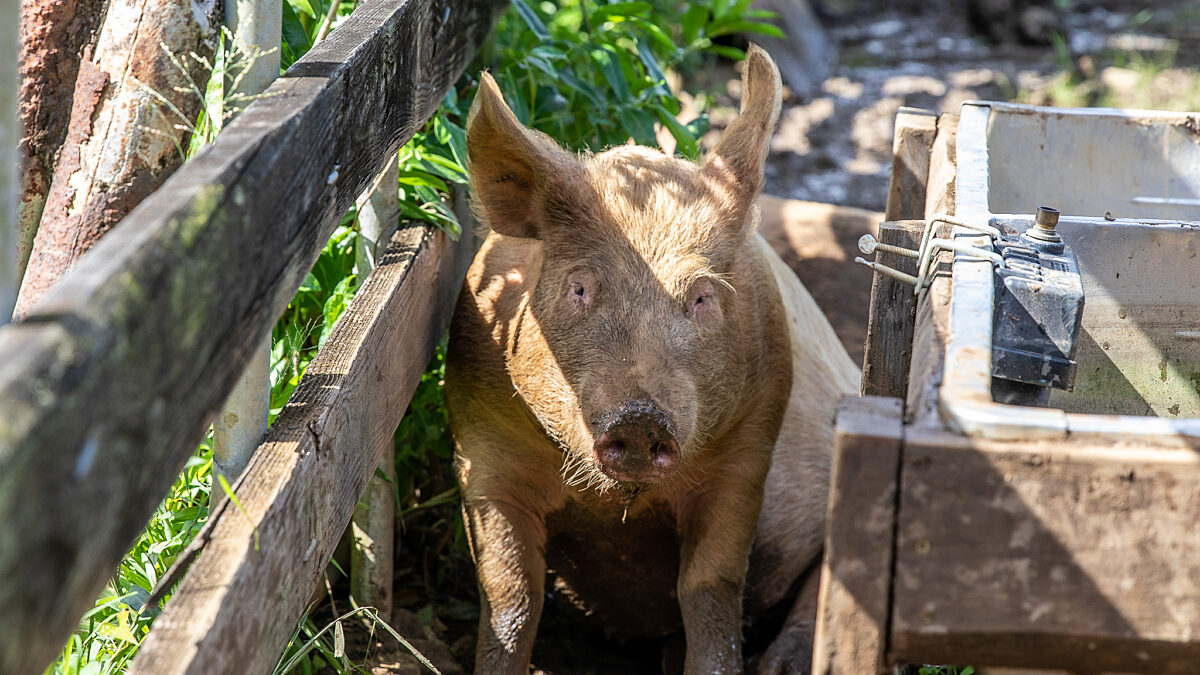USDA Prepares to Gather Critical Information on Swine Industry
TOPICS
PigsErin Anthony
Director, Communications

photo credit: AFBF Photo, Philip Gerlach
Erin Anthony
Director, Communications
In an effort to provide new information regarding swine health and management practices, USDA’s National Animal Health Monitoring System this spring is launching a comprehensive study on swine farms of all sizes across the United States. Selected producers will be notified by mail; participation is voluntary.
“NAHMS provides up-to-date, comprehensive snapshots of swine health and production practices of the U.S. swine industry. The valuable information gleaned from this study is only made possible and credible by industry-wide cooperation of pork producers and their veterinarians,” said Dr. John Waddell, veterinarian and director, key account veterinarians at Boehringer Ingelheim Animal Health.
The study will be conducted separately for farms with fewer than 1,000 swine and farms with more than 1,000 swine. The smaller swine farm study, which runs from May through July, will involve approximately 5,000 swine operations from 38 states. These states account for about 95% of U.S. swine operations with fewer than 1,000 swine.
For the smaller farms, the study will focus on current health and production practices; trends in swine health and disease management practices; the characterization of movement, mortality, and slaughter channels; and marketing practices.
The data on health and management practices provided by this year’s study will be compared with similar data collected in 2007 and 2012 to provide a picture of trends in U.S. swine production on smaller farms.
The study segment on farms with more than 1,000 swine will run from July 2021 through January 2022 and will involve approximately 2,700 operations from 13 states, representing about 90% of larger U.S. swine operations. Study objectives for this segment were developed based on multiple focus group discussions with representatives from the National Pork Board, National Pork Producers Council and the American Association of Swine Veterinarians and through input from industry stakeholders via an online survey.
The aim of the study on these farms is to provide farmers and others involved in the industry with benchmarking information related to housing, productivity, biosecurity, and morbidity and mortality prevention. The study will also delve into the producer-reported prevalence of select patswineens in weaned market swine, and antimicrobial stewardship and use patterns, among other things.
In addition, the data collected will contribute to critically important epidemiologic surveillance that will inform disease management and preparedness strategies to safeguard the swine industry.
For producers with fewer than 1,000 animals, participation is limited to a questionnaire that can be returned online or via the mail. Larger producers who participate will also fill out a questionnaire, but theirs will be completed during a visit from representatives of USDA’s National Agricultural Statistics Service during July or August. If the producer chooses to continue in the study, USDA or state veterinary health professionals will visit the farm from September 2021 through January 2022 to complete a second questionnaire and discuss free biologic testing.
For more information, contact USDA-Animal and Plant Health Inspection Service’s Charles Haley at 970-225-1377 or charles.a.haley@aphis.usda.gov.
Trending Topics
VIEW ALL